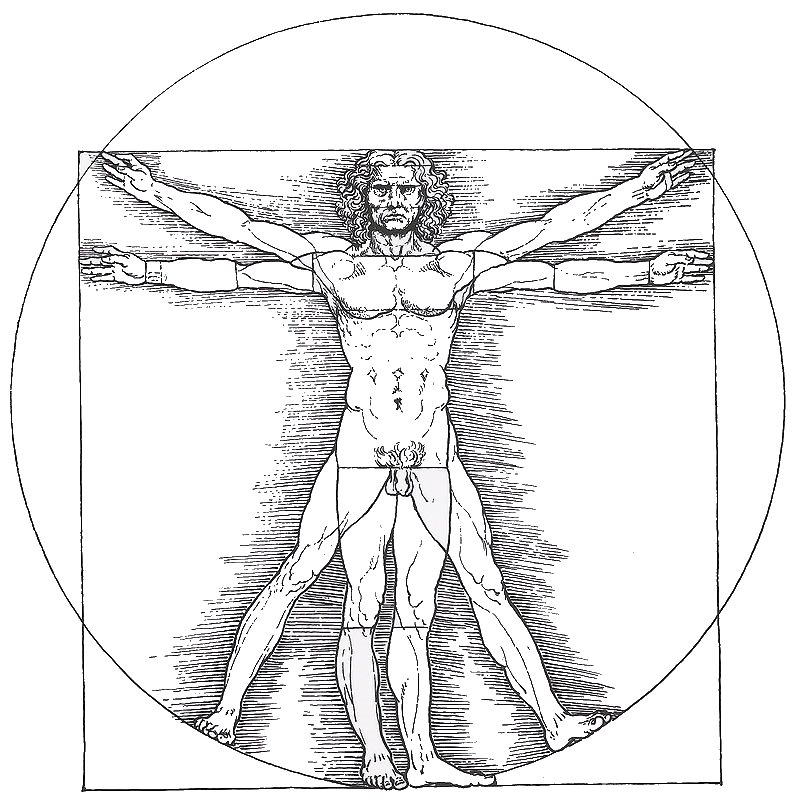Personality and Motivation in Elite Young Athletes
How do young (15 – 20 years) elite athletes differ from the general population in terms of their personality and motivation? Harpreet Singh addressed this question in his master's thesis at the University of Saarland. The question is relevant because it can provide important insights for coaches. To answer the question, Singh used the B5T® Big Five Personality Test developed by Satow, which is available in several languages and captures the five key personality factors as well as the three basic motives of power, security, and achievement. The Big Five Personality Test by Satow can be used for research and teaching purposes free of charge under a CC license.
Results
In total, Singh surveyed 61 elite athletes aged between 15 and 20. 42 of them practiced a team sport and 19 an individual sport. In an initial comparison, significant differences were found between these two groups: Young elite athletes from team sports are significantly more extroverted than young individual athletes and have a significantly stronger need for power (Figure 1 and 2).
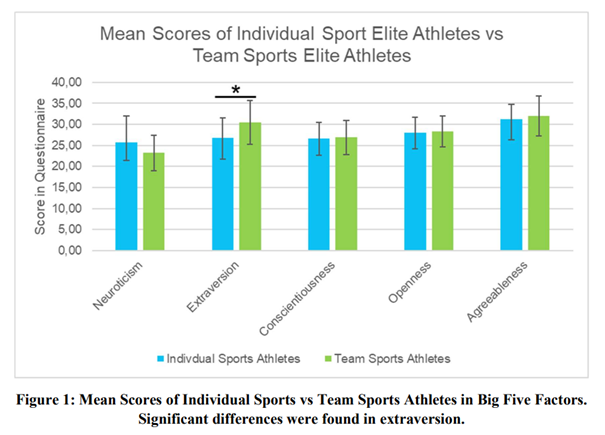
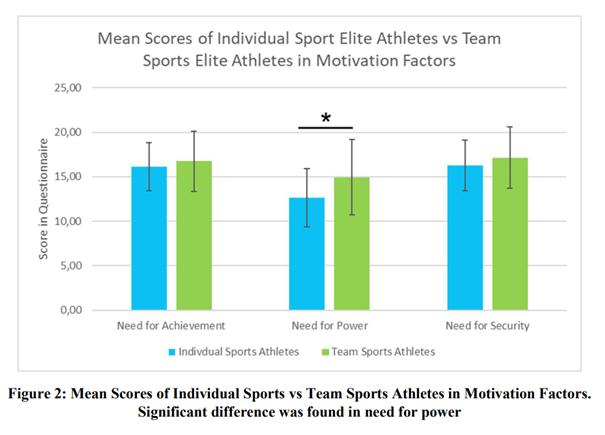
Compared to the general population, young elite athletes from individual sports are characterized by particularly high values for the personality dimension of agreeableness as well as by exceptional achievement motivation and a lower need for security. However, the personality dimension of openness was lower compared to the general population.
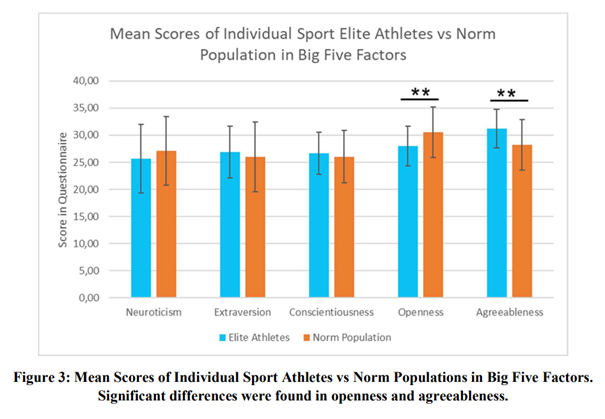

Young elite athletes from team sports, compared to the general population, also exhibited higher agreeableness and lower openness, and were significantly more extroverted with significantly lower values for neuroticism. In terms of motivation, no significant differences were found with the general population.
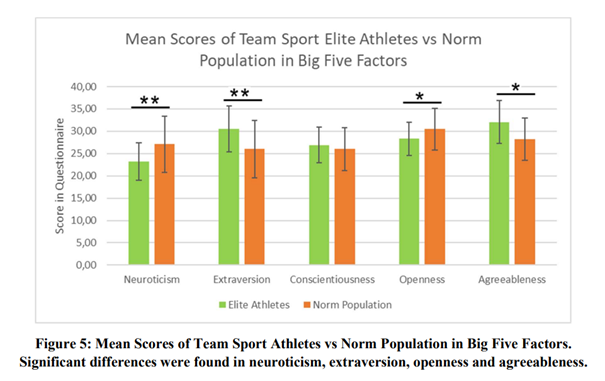
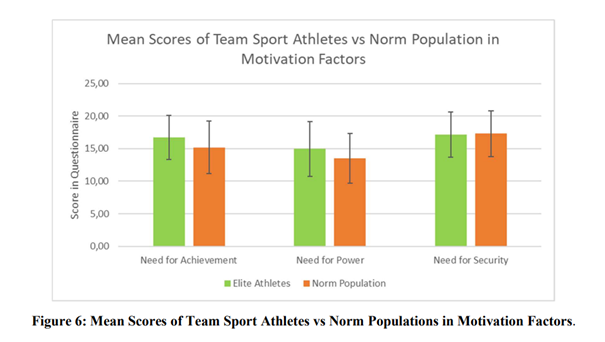
Summary
Despite the small sample size, significant differences were found in terms of personality and motivation among young elite athletes. Compared to the general population, young elite athletes are overall significantly more agreeable but also less open to new experiences. Young team athletes are additionally much more extroverted and emotionally stable (low values for neuroticism). When compared to individual athletes, team athletes are also more extroverted with a greater need for power and influence.The results may seem surprising at first glance. On one hand, because young elite athletes are less open than other young people and on the other hand, because achievement motivation is only higher in individual athletes compared to the general population. On second glance, the lower openness is explained by the full concentration on the sport. Those who are fully focused on the sport can and should not be as interested in other things. Regarding motivation, individual athletes are primarily motivated by the need for achievement, while team athletes are mainly motivated by affiliation and power. This differentiation also makes sense on closer inspection: excessive individual achievement motivation can be detrimental in team sports and burden the team. Team athletes must put the team first.

